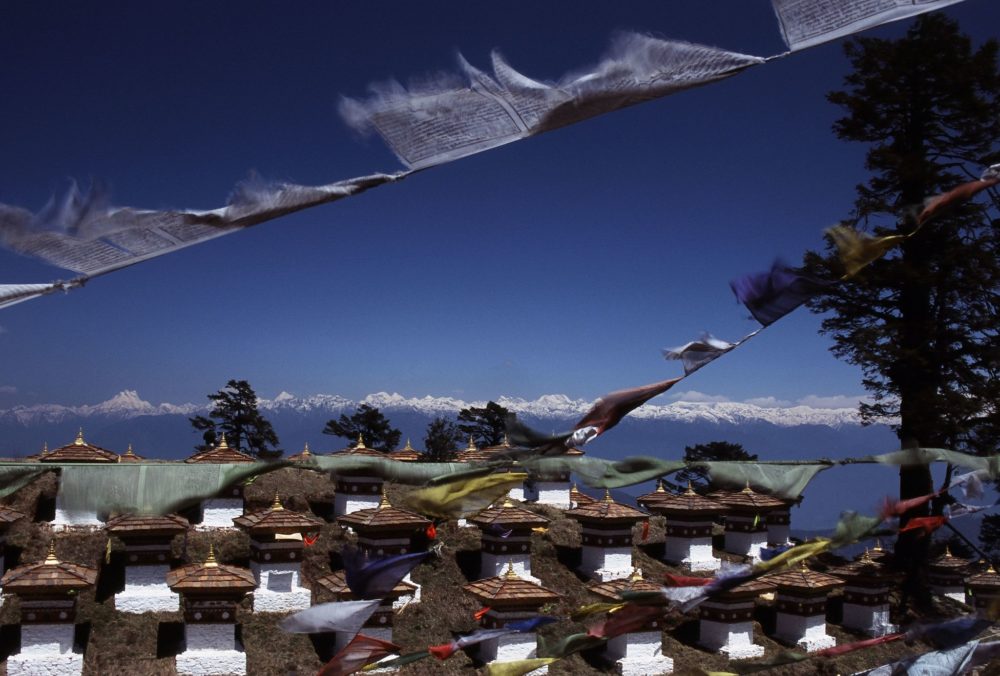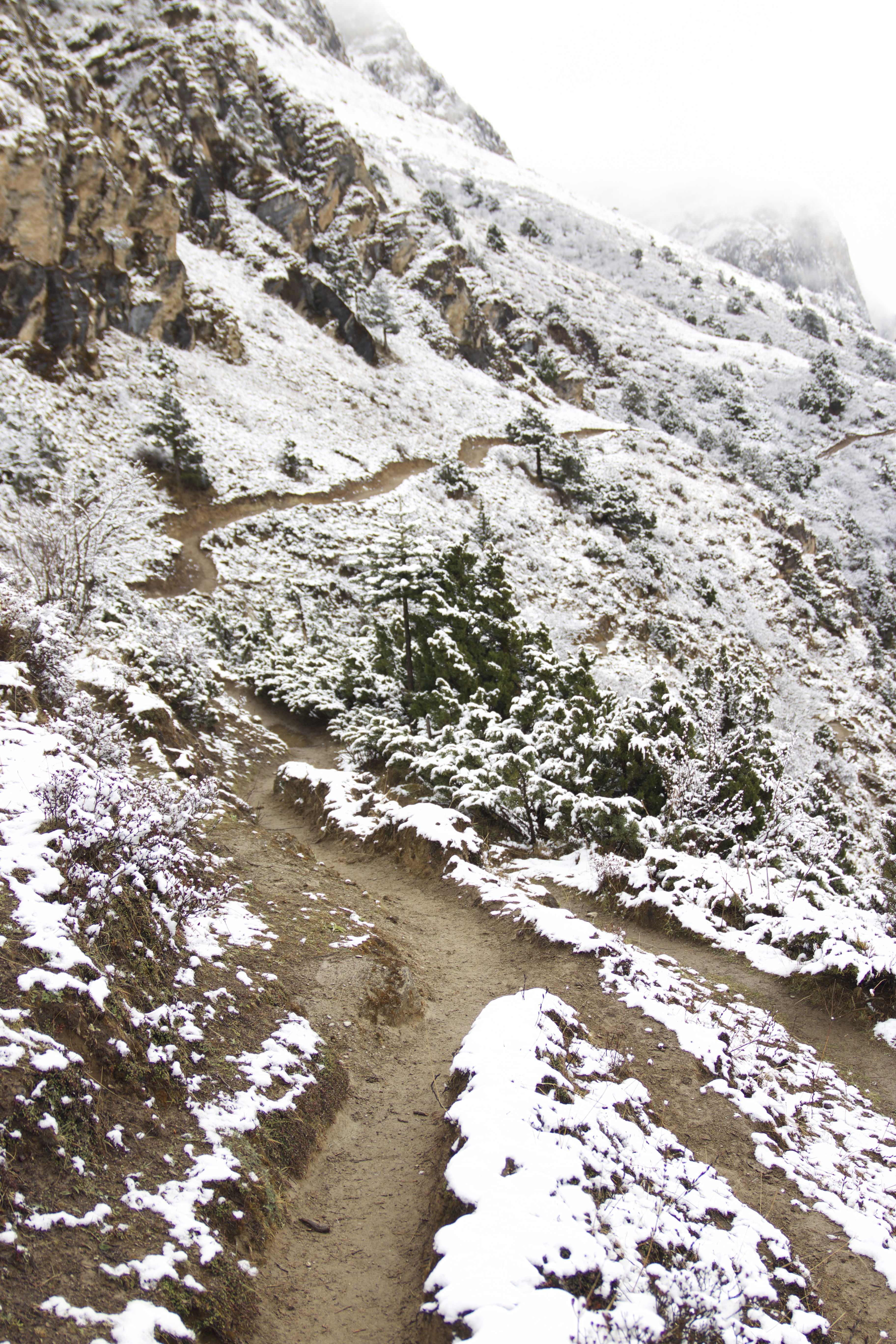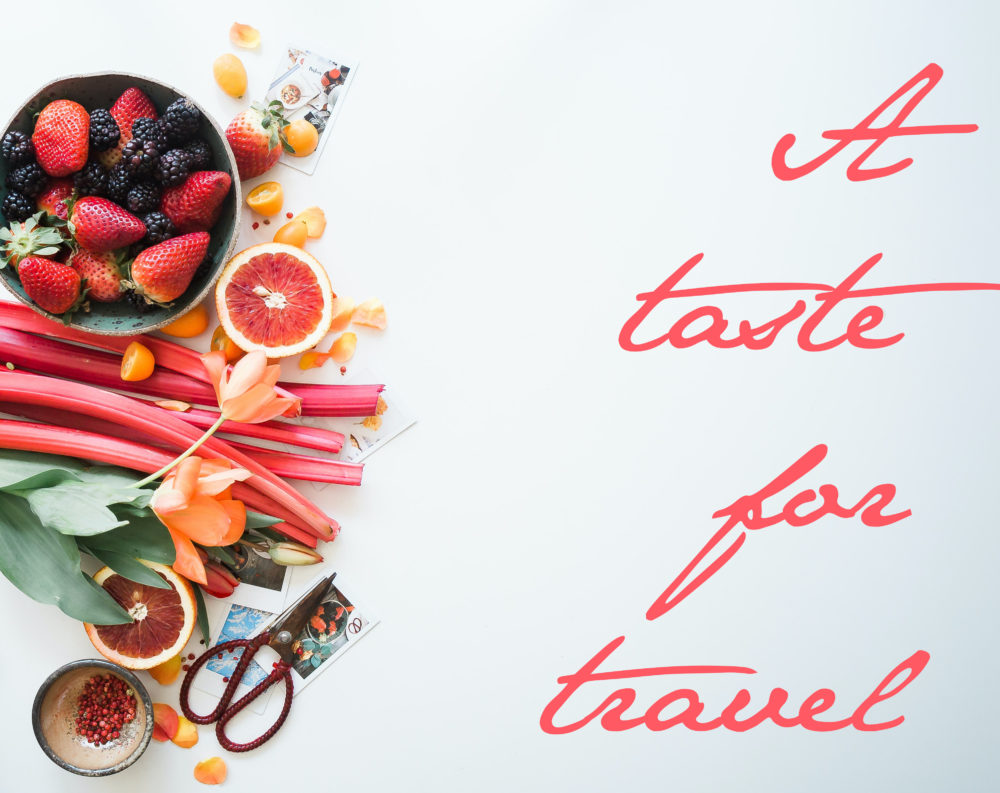
Photo by Melanie Chambers
I feel like a wide-eyed tourist taking pictures of the giant phalluses. But, it’s hard to avoid them. The phallic symbol is painted on most homes in rural Bhutan.
I’m in the home of the phallus artist at the Chimi Lhakhang Monastery in the Punakha Valley, where the practice of displaying the phallus symbol originated.
As the story is told, the 16th century Mad Saint was a womanizer and a drunk. But his life and phallic worship is meant to symbolize the duality of existence—good and bad. Somehow, it seems a fitting symbol for a country that is trying to protect its two greatest assets: nature and culture.

The Kingdom of Bhutan only opened its doors to tourists in 1974; you must buy a pre-paid, pre-arranged itinerary, which means a guide travels with you for the entire trip. Independent travel is prohibited.
Bhutan’s alternative to GDP: gross national happiness
Instead of measuring its GDP in terms of money, Bhutan measures its prosperity in happiness—GNH (gross national happiness) is achieved through protecting things such as culture and the environment.
Bhutan is attempting what no other country in the world is doing, which makes for a truly unique travel experience.
During my 22 day trip, which includes a cultural tour of monasteries and an eight-day mountain trek climbing 5,000 metres, I experience the struggle between modernity and tradition.
Reconciling past and future

Photo by Melanie Chambers
The country only saw its first television in 1999 and the main road that connects east and west is still being constructed. Monasteries are more common than fast food joints. In fact, there are none of the latter.
Landing in the town of Paro, the airport runway parallels a field home to grazing cows. Into the valley, the mountains are speckled with identically beautiful white homes with flared roofs (all architecture must follow strict guidelines), and the grand Rinpung Dzong, a Buddhist monastery and fortress. So far, Bhutan feels like a fairy tale.
The Tiger’s Nest monastery is a call to reflect
The most iconic and famous of Bhutan’s monasteries is Paro Taktsang, the Tiger’s Nest monastery. Clinging high up the side of a mountain, legend has it that the ‘second Buddha’ Guru Rinpoche, who brought Buddhism to Bhutan in the 7th century, flew in on a Tiger’s back. At the monastery he meditated for three years, three months, three days, and three hours.

Photo by Melanie Chambers
From the Paro Valley, it’s a two-hour climb to 3,120 metres, and each step becomes a little harder as the air becomes thinner. Weaving our way up the well-worn path, the monastery slips in and out of my view, until we’re standing at the stone steps.
Inside the monastery, crimson-robed monks chant, oblivious to our presence and stares. “It takes nine years to become a monk and three years of meditation,” says Rinzin, my young guide.
On our way out, we light a butter candle and say a prayer for our deceased loved ones. Buddhists believe in talking about death at least five times a day. “It’s part of the circle of life,” says Rinzin.
Descending again, the view is miraculous: strings of colourful prayer flags (meant to carry the hymns in the wind) flap in the breeze, as a single file of hikers makes their way up the rocky cliffside.

Photo by David Cowen
An epic trek to new heights and perspectives
But this was just a warm-up to the real hike. Bhutan is in the western Himalayas, after all. I’m accompanied by a chef, a helper and horseman, who has loaded up six horses with tents, food and gear.
It’s day one of our eight-day journey on the Jomolhari Mountain Trek. With two mountain passes at almost 5,000 metres, this is Bhutan’s version of Everest Base Camp. But no one actually climbs to the peak of Jomolhari. At 7,326 metres, it’s off limits.
“Buddhists believe any mountain over 6,000 metres is sacred. And plus, we don’t want the pollution and crowds like Nepal,” Rinzin explains.
During my eight-day trek, we rarely encounter other tourists. But it’s spring and the weather is unpredictable.

Halfway through the trek I’m shaking the snow off my tent door every morning. At Jangothang base camp we’re taking a rest day, with a short hike to a set of lakes called Tsophu at 4,050 metres.
Slowly emerging over the crest of a hill and turning around, I finally see it—Jomolhari’s peak is entirely white against a blue sky. It couldn’t be more perfect, or dramatic.
Trekking further on, we meet a yak herder who invites us into her makeshift home under a blue tarp. Inside are two single mattresses on either side of a stove and a wall of yak dung for fuel. “This nomadic way of life is rare now,” says Rinzin.
The final ascent
The next day we make our final ascent: 4,830 meters to the Ngye Pass.
The morning’s trek is through soft white snow, passing pine trees dotted with red rhododendrons. By afternoon, I’m trekking through snow up to my ankles.

“Five more steps,” I can hear Rinzin say, but I can’t see him through the blowing snow. At this elevation, I’m lethargic and breathless. Having a nap sounds better than continuing. But I make it. Even without a clear sky to see the view, the feeling is both calming and rewarding.
Buddhist wisdom transcends centuries
Once back in Paro, we drive the nausea-inducing switchback road carved into the mountainside to the oldest nunnery in the country. Along the way, I notice a road sign: “Life is precious, don’t waste it.”
Buddhism permeates this country—in the most unlikely of places. But the Buddhist ideology, that it’s less a religion and more of a lifestyle, is truly apparent at the country’s oldest nunnery.
Kila Nunnery or Chele la Gompa, is situated on the cliffs below Chele pass (3,500 meters) an hour outside of Paro. Founded in the 8th century, today about 70 nuns (some as young as 6-years-old), call this isolated retreat home.

Paro Valley. Photo by David Cowan
Walking past the traditional white homes clinging to the cliffside, only about seven in total, I see girls with shaved heads and long crimson skirts washing dishes on a porch. Another girl pops her head out of a window above us as we walk along the stone path through the mini village. A teenager greets us; hiding her face behind her hands, she giggles every time we ask her questions. “She came here because she was acting up at home, getting into trouble,” Rinzin translates for me. “She chose to come here. She’s happy here.”
Western influences dot the capital Thimphu
Days later we’re in Thimphu, the capital city, to celebrate a successful hike. Compared to the mountains it’s certainly cosmopolitan, but not quite by western standards.
There are no skyscrapers or buildings larger than a few storeys, and no traffic lights—a policeman directs cars with hand signals from a gazebo in the city’s main intersection.
However, Italian coffee shops and karaoke bars reveal an influx of westernization. We decide to visit Mojo Park, one of the city’s most popular live music bars. The Bhutanese singer has long, dyed blonde hair and is wearing a tight AC/ DC shirt.
The place is packed with tourists and guides (though the guides are not wearing their traditional gho–required robes for entering monasteries and government buildings).
The singer grips the microphone and launches into the song “What’s Up” by 4 Non Blonds. Everyone sings. One line of the song, “the world was made up of this brotherhood of man, for whatever that means,” stands out. In a country striving for happiness, these words, in this place, seem even more profound.
Melanie Chambers
Latest posts by Melanie Chambers (see all)
- Tokyo: A Seamless Blend of Old and New - November 30, 2022
- Tokyo: Discover a City of Great Contrasts - November 13, 2021
- Expect the Unexpected from the Florida Panhandle - June 4, 2020
- 7 Best Restaurants in Key West for Authentically Local Flavours and Plenty of Key Lime Pie - June 4, 2020
- Bhutan’s Quest for Happiness is a Balancing Act - April 20, 2019








No Responses to “Bhutan’s Quest for Happiness is a Balancing Act”